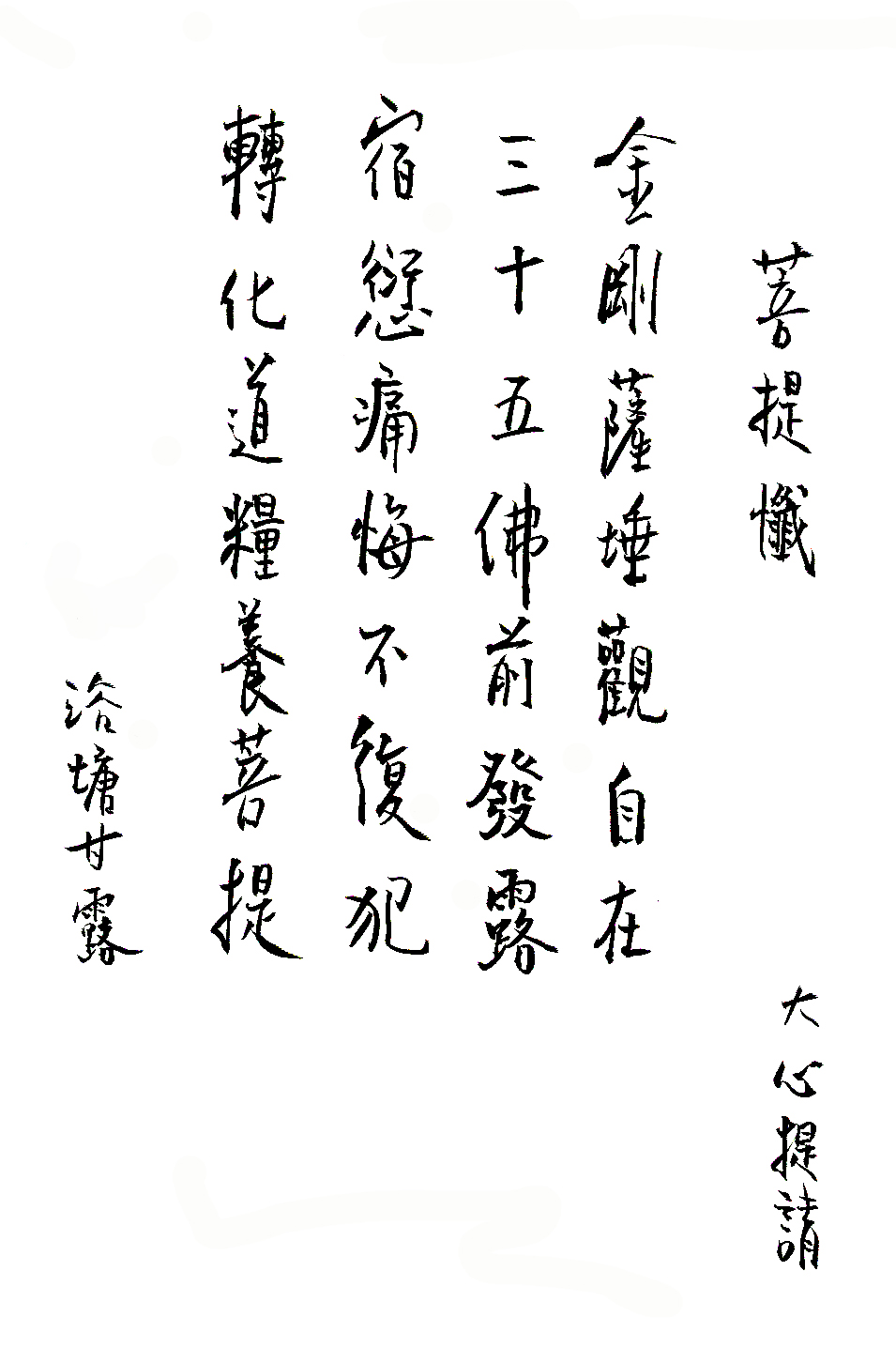金剛薩埵觀自在,三十五佛前發露;
宿愆痛悔不復犯,轉化道糧養菩提。
跋
修行者懺悔宿業,可修八十八佛懺、三十五佛懺等。密宗之懺法通常以釋迦牟尼佛、金剛薩埵或四臂白觀音為懺主。修懺之重點是承認及追悔宿業之過失,並且決心不再復犯。禮佛是速效的消業良方。
此作之用心則在於指出:懺悔若只侷於個人之消業,則難免仍留在我執之範圍內。因此真摯懺悔宜由菩提心的觀點來從事,而把過去的錯失及今後的改良,視為長養菩提心,乃至究竟證覺之道途上的歷鍊。如此可免局限於自心之糾纏,而易於進入坦蕩的淨化過程。
二○○六年八月十日
養和齋 於加州
 |
Bodhi Repentance
Bodhi Repentance Yutang Lin
In the presence of Vajrasattva, White Chenrezi,
or to the
Thirty-five Buddhas I reveal misdeeds of body and mind.
Repenting for past mistakes and will never revolve again,
Thus transforming karma into trials and lessons on Bodhi.
Comment:
To repent for past karmas a practitioner may adopt the repentanceritual of the Eighty-eight Buddhas or that of the Thirty-five Buddhas. Tantric rituals of repentance usually center on Sakyamuni Buddha, Vajrasattva or White Chenrezi as the holy beingto receive our repentance and then grant forgiveness in terms of renewed purity. The key point of repentance practices is the admission and regret for misdeeds in the past and the resolve not to recommit such mistakes again. Making prostration to Buddhas isa speedy and effective practice for dissipating karmic hindrances.
The intention of this article lies in pointing out the following: When restricted to dissipation of personal karmic hindrances repentance practices could hardly escape from the sphere of self-centered grasping. Therefore, sincere repentance practices had better be conducted in the light of Bodhicitta. Thus, misdeeds committed in the past and improvements attempted from now on are all regarded as trials and learning lessons on the path of cultivating Bodhicitta until full enlightenment. In this way confinement to entanglements in one's own mind could be avoided, while entrance into open and wide processes of purification wouldbe eased.
Written in Chinese and translated on August 10, 2006
El Cerrito, California
[Home][Back to list][Bodhi Repentance]